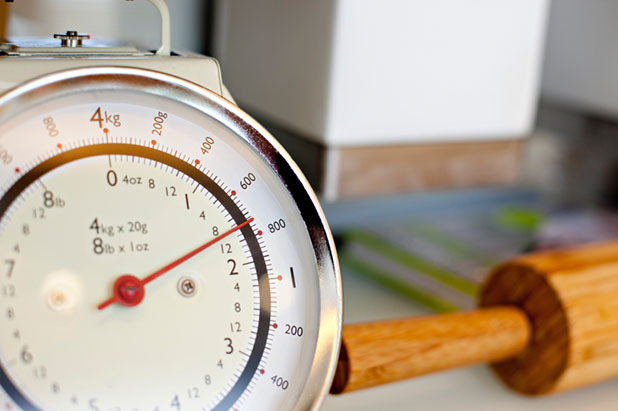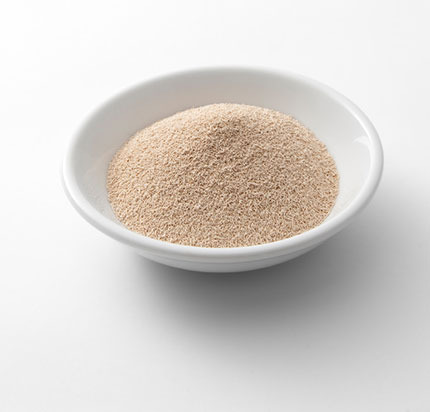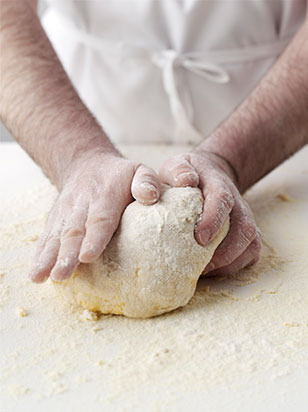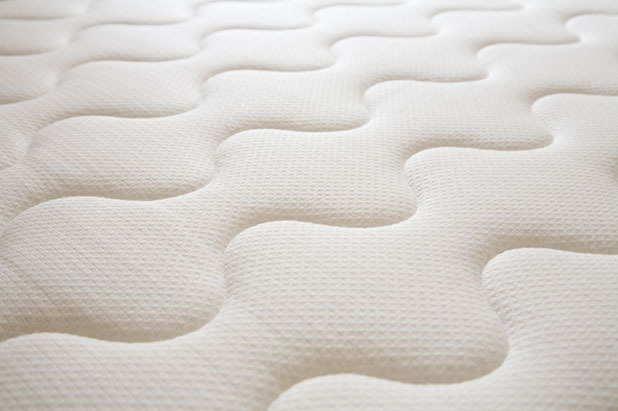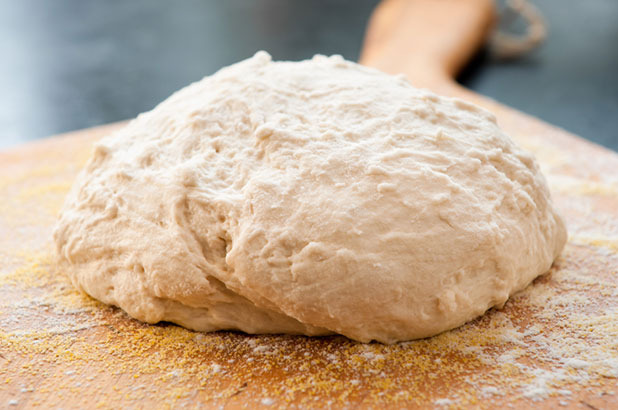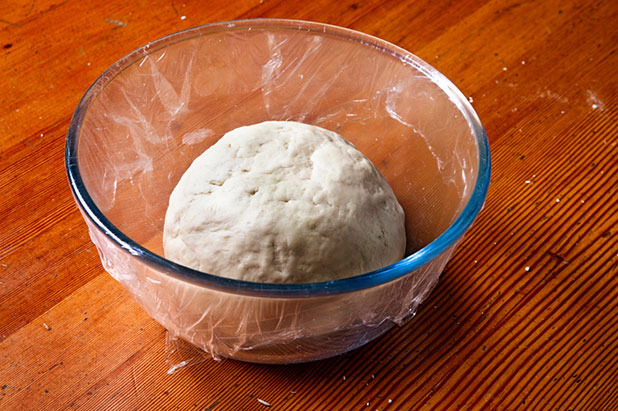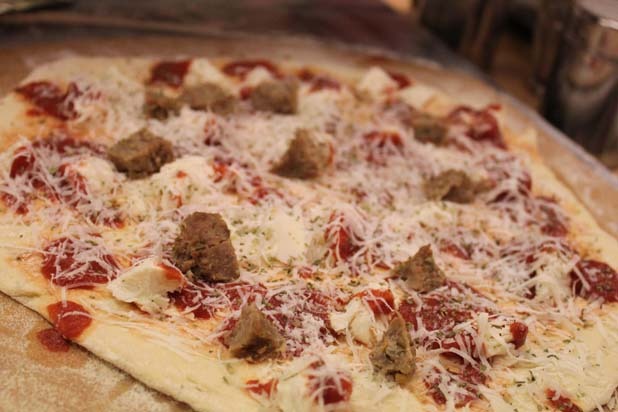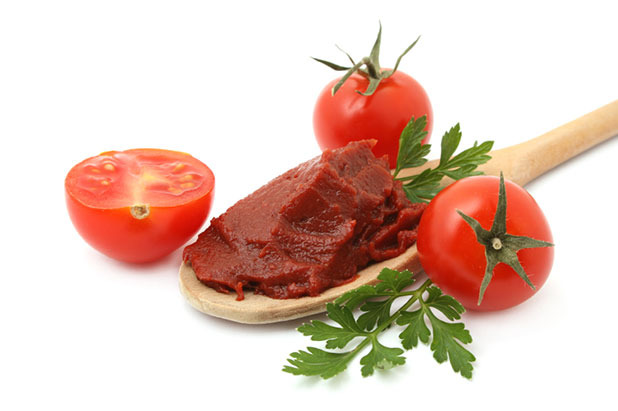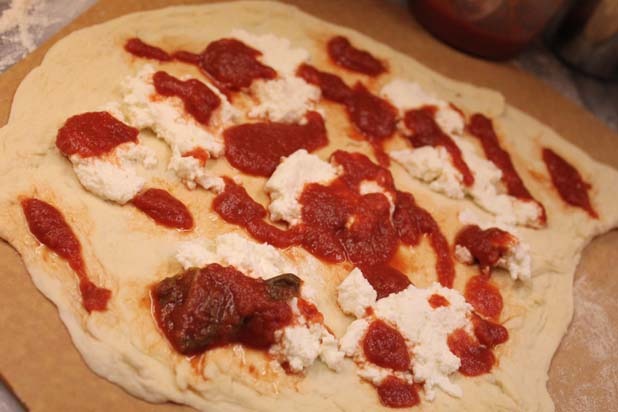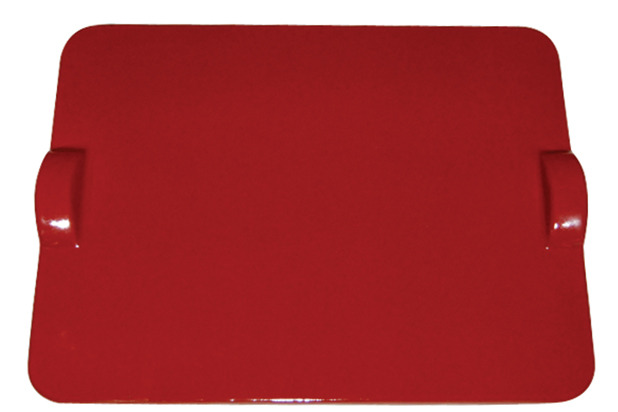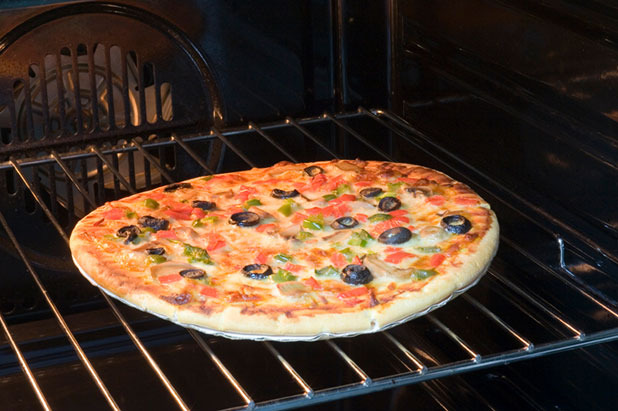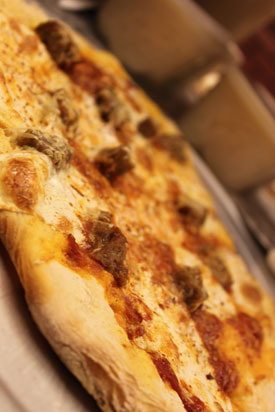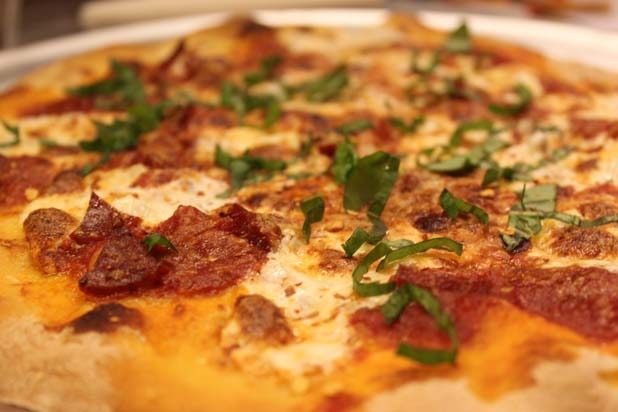Tips For Making The Perfect Homemade Pizza Slideshow
While the recipe for homemade pizza dough is relatively straightforward, there is one point that Mark Bello stresses, "Definitely do things by weight, not volume." He means that it's important to use a scale to measure the flour because that allows you to be precise and consistent (this is how it's done in professional kitchens and pizzerias).
Proofing Your Yeast
In his classes, Bello proofs the yeast (which essentially means that it's alive) to show home cooks who usually avoid working with it that it's not scary. To proof it, you simply add warm water (the temperature will be specified on the yeast package) and sugar to one packet of active dry yeast in a bowl and set it aside. If it gets foamy, then you know it's alive. (Exciting, right?)
Bello explains that the sugar is a way to proof the yeast, but he's actually thinking of taking it out of his pizza dough recipe. Why? He follows the school of thought that less ingredients are better, so why put in something you don't need? Though a yeast package failed him once during a class, he says it's not always necessary to proof your yeast.
Just make sure when purchasing yeast that it has been stored in a cool, dark place (and do the same at home) because exposure to light will deactivate the yeast even if it doesn't say that it's expired on the package. At home, he recommends storing yeast in an airtight jar and keeping it in the fridge. But, if you're making pizza for a large dinner party, then it might be a good idea to proof the yeast just in case.
Kneading: Human vs Machine
Either method is OK in Bello's book. The problem with using a mixer is that the timing can never be exact because each machine is different. As he says, "Four minutes on one, will not be four minutes on another." As long as you keep a close eye on your dough and stand by the mixer to touch it periodically, then you should be fine.
Kneading is a crucial part of the dough-making process because it helps develop the glutens (the protein that gives it elasticity) in the dough, which is what you need to stretch your dough. If you've ever dealt with dough that refuses to stretch out and bounces back as soon as you push it out, then it's been over-kneaded and is too elastic.
How to do it? Bello instructs in his classes to place the dough on a lightly floured surface, then, "Lean into the dough with the palm of your hand. Press it down, press it forward, fold it over, and repeat." He says that while you'll develop the muscles overtime, you really need to use your body weight, lean into it, and just make it happen. It usually takes him about five minutes by hand, but that also varies depending on how much coffee he's had that day.
When to Stop Kneading
How will you know when it's done? Bello says that there should be a rebound and a bounce back. He likens it to a Tempur-Pedic mattress and even brings out a sample during class for students to touch and compare. Once you get the feel of it, you will notice a point where the dough firms up and becomes denser. (He notes though that if your dough is sticky, then you can add in more flour, one tablespoon at a time. And, likewise, if it's too dry, then try the same tactic with one tablespoon of water at a time instead.)
Letting the Dough Rise
If using his pizza dough recipe, then divide the dough into four uniform balls (again, using your scale to measure them out to roughly half a pound each), then dust with flour and set aside in either a large bowl where they can at least double in size or separate covered containers or bowls sealed with plastic or foil and allow to rise — this keeps the dough from drying out. Your dough should be in a warm area, about 80 to 90 degrees is ideal according to Bello. While on a preheating oven is too hot, he says that a cabinet above the oven happens to work quite well — just as a side note, this is not a good place to store oils or anything else that spoils with heat.
Freezing the Dough
If you're not looking to make four pizzas that night or just end up using half of the dough, then you can freeze it in an airtight container after the rising process or within a day or two of making it (after storing it in the refrigerator, of course). When placing it in the container, shape it back to a firm ball again, like you did previously before letting it rise.
To use the dough, Bello recommends a slow overnight thaw in the fridge, and then, when you start preheating the oven to bake the pizza, place the dough in a warm spot next to the oven. Colder dough feels tougher so you want to make sure it gains a uniform temperature throughout.
Shaping the Dough
Both on his site and in class, Bello demonstrates his unique method for shaping dough that he likens to a "DJ" method. On a smooth, lightly floured surface, place the ball of dough in the center. Spread the edges out a little with your fingers, moving from close to the center outwards, but leaving the center slightly thicker than the rest. Place two fingers of your left hand on the top edge of the dough furthest away from you, and set the two fingers of your right hand beside it on the right. In a clockwise motion, use your right hand to stretch the dough out and down (gently). Spin the dough 90 degrees to the right and repeat.
Continue if it's working for you, or try Bello's other tip (one that always works better for me): Pick up the dough and place the edges on your knuckles and move your hands along the outer edges to stretch it out. Bello also suggests placing the dough on a floured surface and picking up the outer edges, then gently squeezing the dough while turning it. He explains that the weight of the dough will help stretch itself. (If any tears happen, then just pinch the hole closed and press down on it to even it out.)
Stuck with dough that won't stretch out no matter what you do? Bello says to use a rolling pin for over-kneaded dough, but a wine bottle is a fine substitute just be careful. You're looking to reach about 14 inches, but don't worry if it doesn't become a perfect circle. Homemade pies are meant to have some character.
Tomato Sauce
Now that you've got your dough all ready to go, it comes down to what can really make or break a pizza: the tomato sauce. Bello's tip? Keep it simple. He uses good quality, pured tomatoes, preferably the brand Passata di Pomodoro thats usually found at Italian grocery stores or specialty food stores. Then he uses some grated garlic (about three cloves) and cooks it with the tomatoes and a little bit of salt and sugar to taste. (Just make sure not to oversalt the sauce since canned tomatoes usually have salt already added to them.)
The Jackson Pollock Method
One night, when Bello was hungry and only found himself with a little bit of cheese and a little bit of sauce, he did what he now refers to as the Jackson Pollock method — scattering around pockets of cheese and sauce instead of slathering a layer of sauce on the bottom. It ended up being one of the best pizzas he has ever eaten and this method gives you that perfect ratio of cheese to sauce that can be so hard to achieve.
Pizza Stone
If you really want to make a good pizza at home, then Bello strongly recommends that you save up and invest in a stone that's at least ½-inch thick because they maintain an even heat in the oven and give pizza that crispy and delicious crust that's hard to achieve otherwise. What happens is that when the pizza hits the stone, it pulls the heat away from it, so if it's not thick, then it can't rebound quickly enough to cook the pizza. He prefers the Emile Henry stone (pictured at left) because it's micro-glazed, meaning that it has little cuts in it and cooks the pizza quickly and efficiently.
The Oven
The important thing to remember when baking is that every oven is different. Bello says to empty the oven of all cookie sheets and pans and then to preheat the oven with the pizza stone inside at a temperature of 500-550 degrees for about an hour, so that the stone has time to absorb the heat. Overtime, you'll notice if there are hot or cool spots in your oven and should arrange your rack accordingly. You want to cook the pizza until it has a nice golden-brown crust, which generally takes about 8 minutes but again, every oven is different so it's important to keep an eye on it without opening the oven too many times (you lose heat every time you open it up). He recommends checking once after 5 minutes to check on the progress.
Semolina vs Cornmeal Crust
While some pizzerias dust the bottom of their pizzas with cornmeal for a crunchy bite, Bello prefers to use semolina flour instead because it has a nutty texture to it and toasts well. He sprinkles some on the bottom of a peel, then places the dough on top and slides it onto the preheated pizza stone in the oven. If you don't have a peel at home, then he recommends using a clean sheet of cardboard and dusting it with the semolina flour. Alternatively, you could use a thin wooden cutting board.
Finishing Touches
Instead of dressing up your pizza with herbs, red chile flakes, or other seasonings before you bake it, Bello recommends putting them on at the end because they have more of an impact this way. And most importantly, just remember to have fun. Play around with different combinations that you like and experiment. But definitely try out the dessert pizzas — they are a must!
